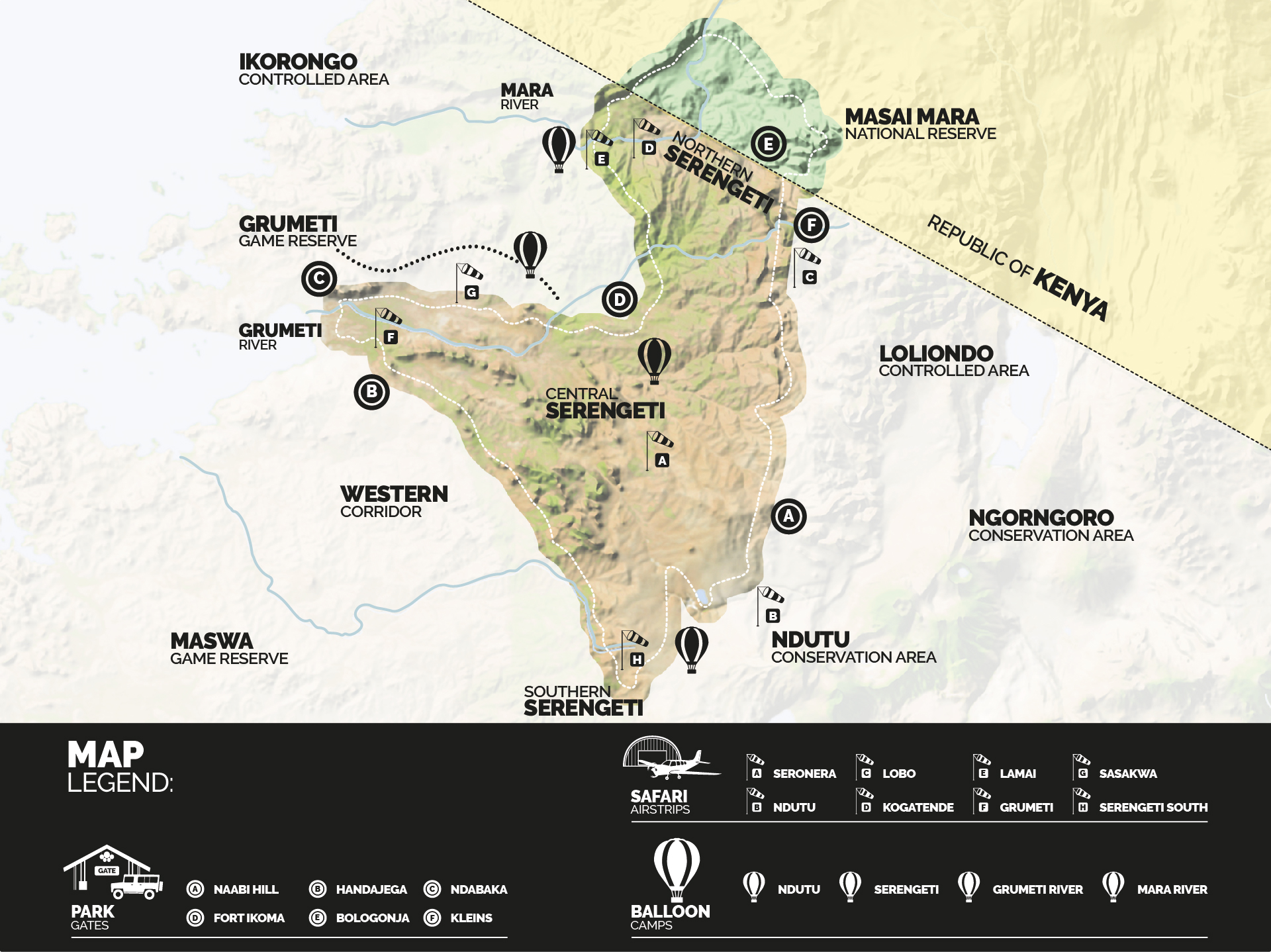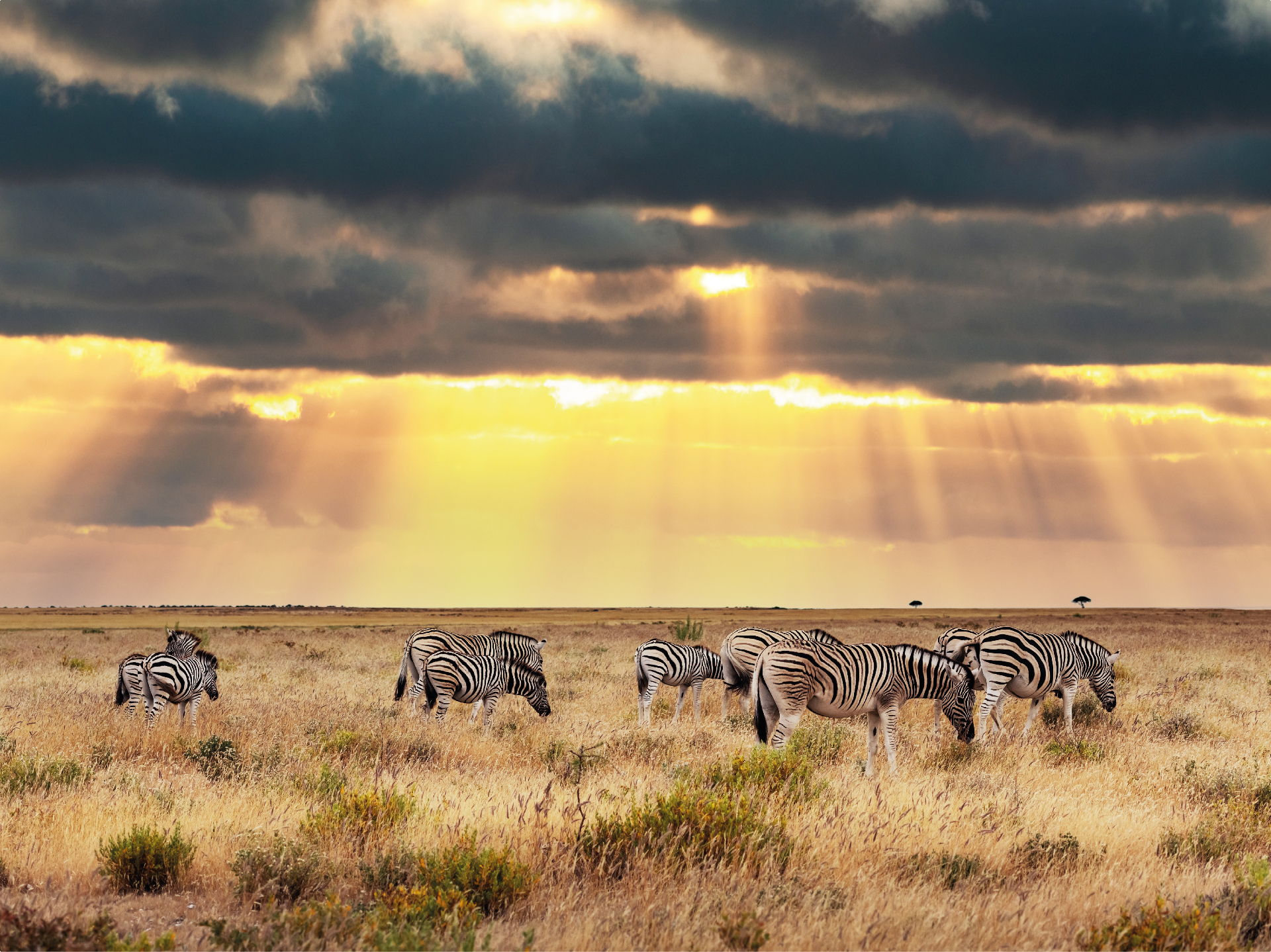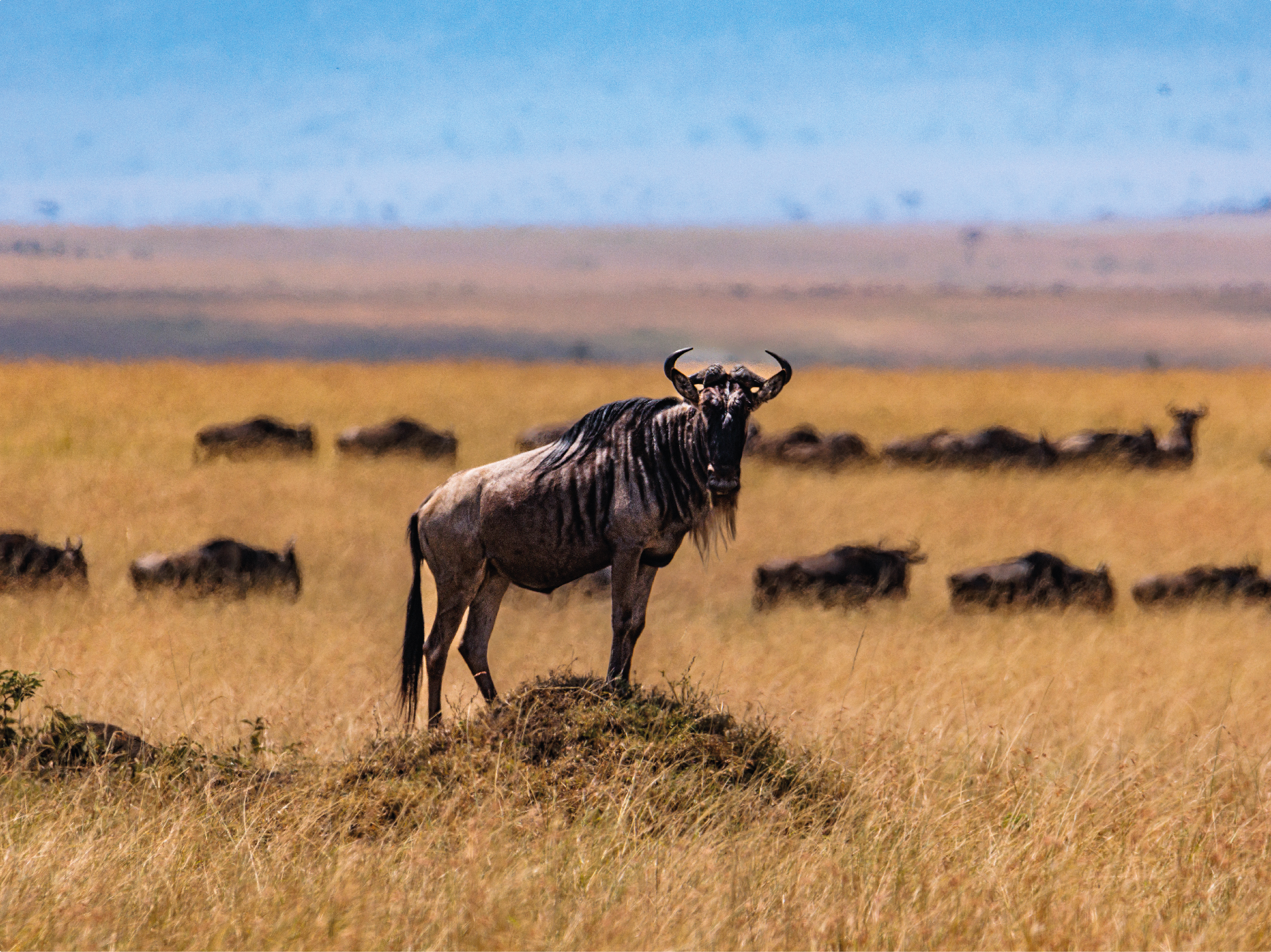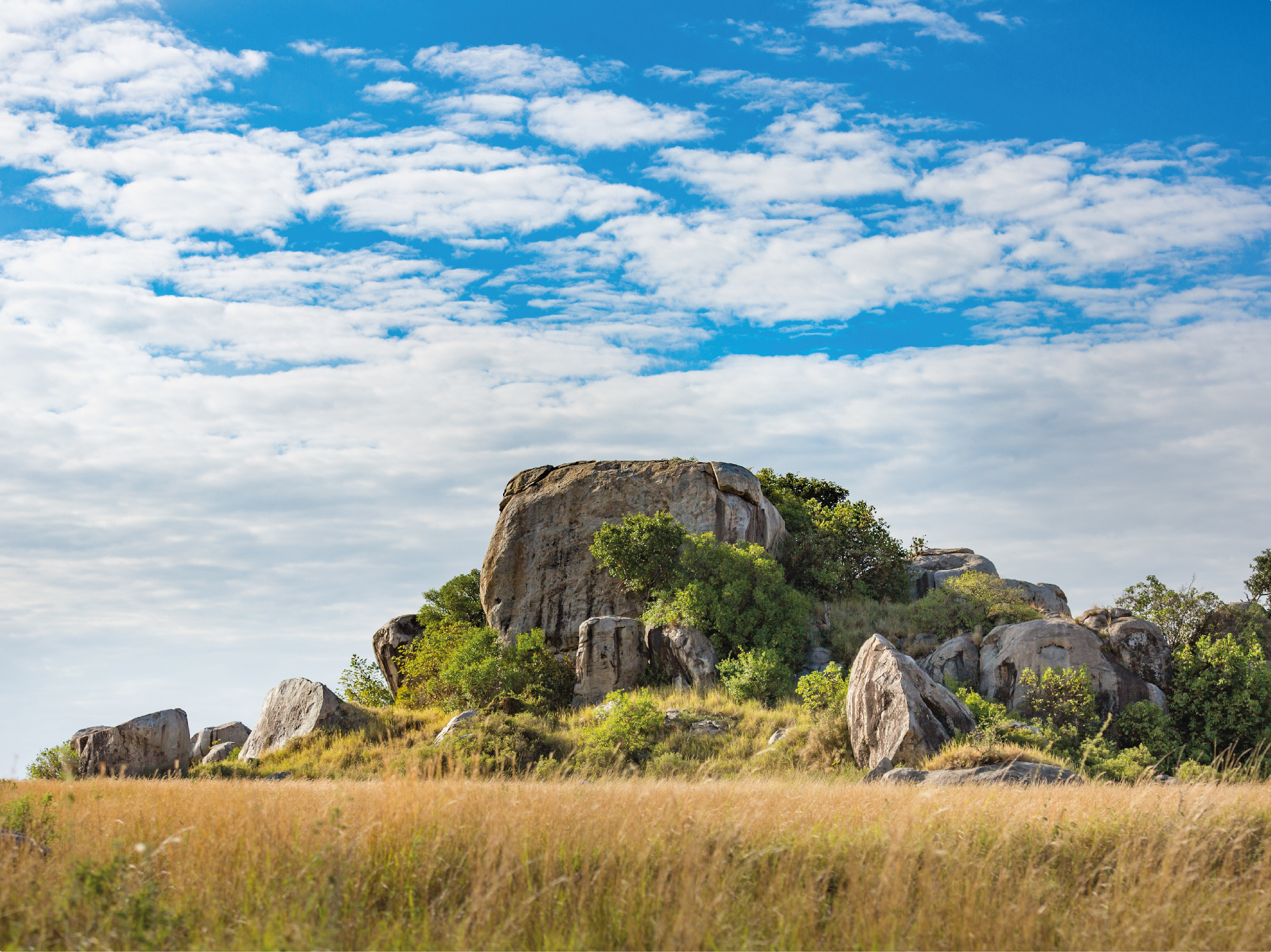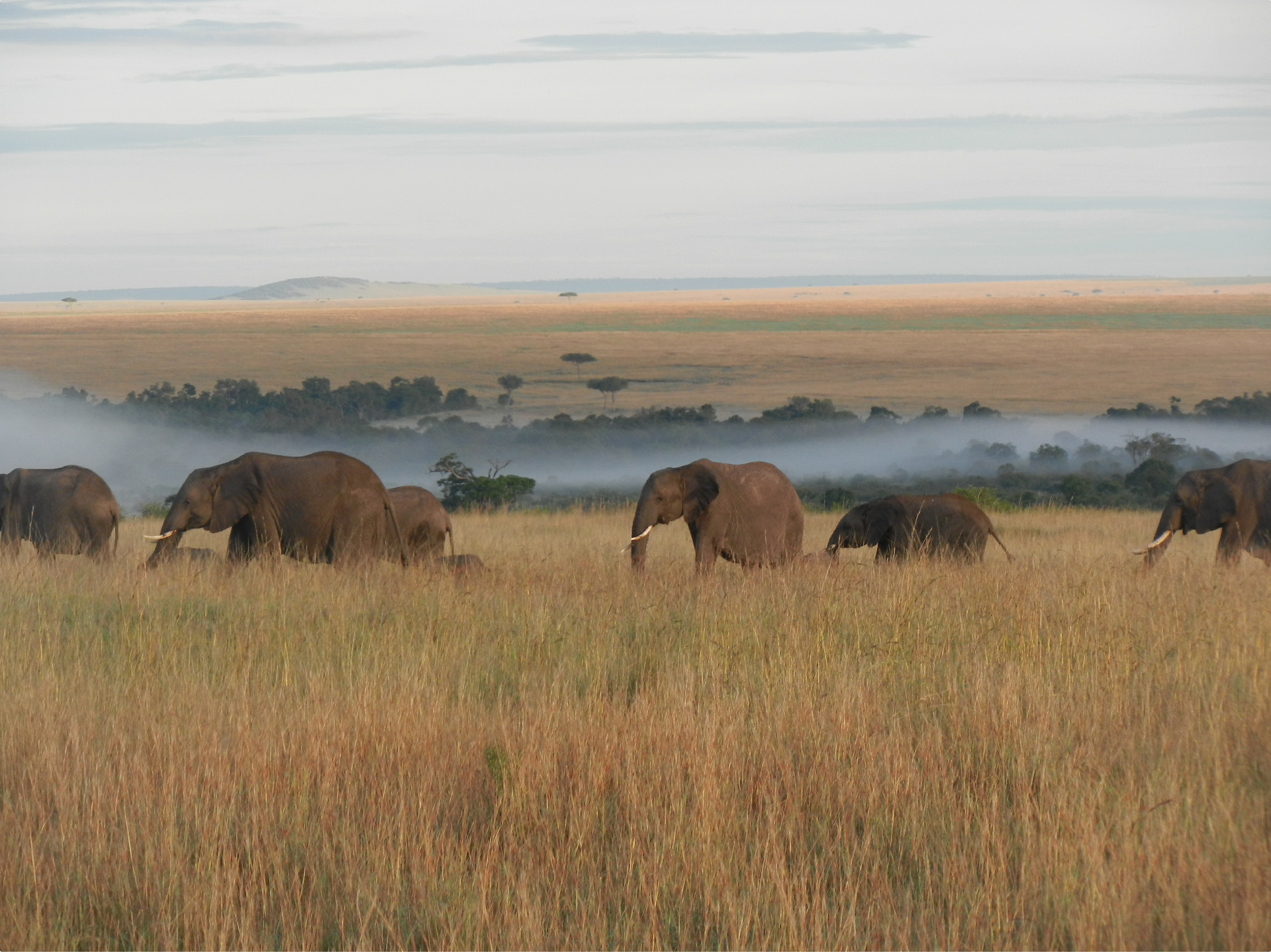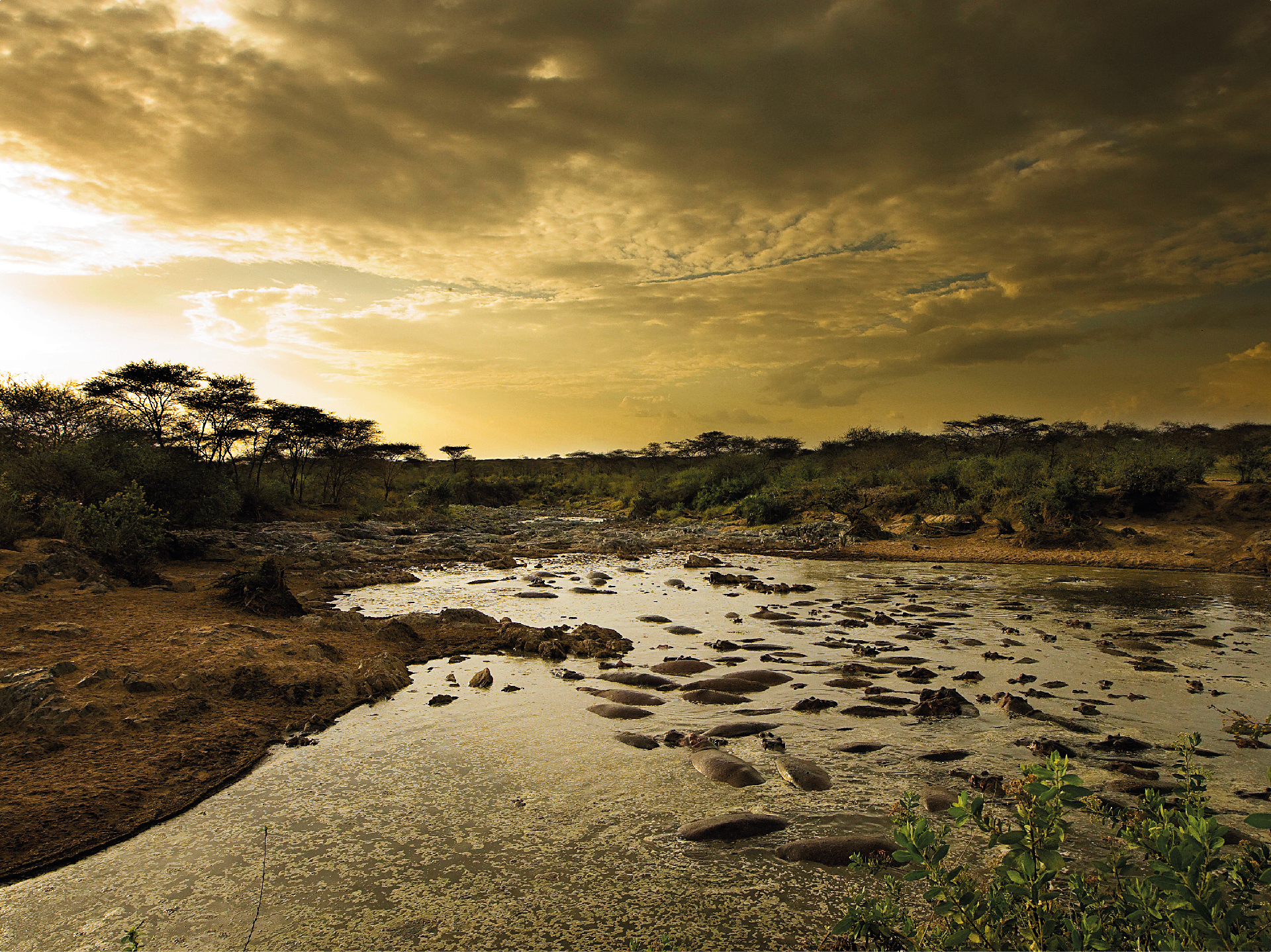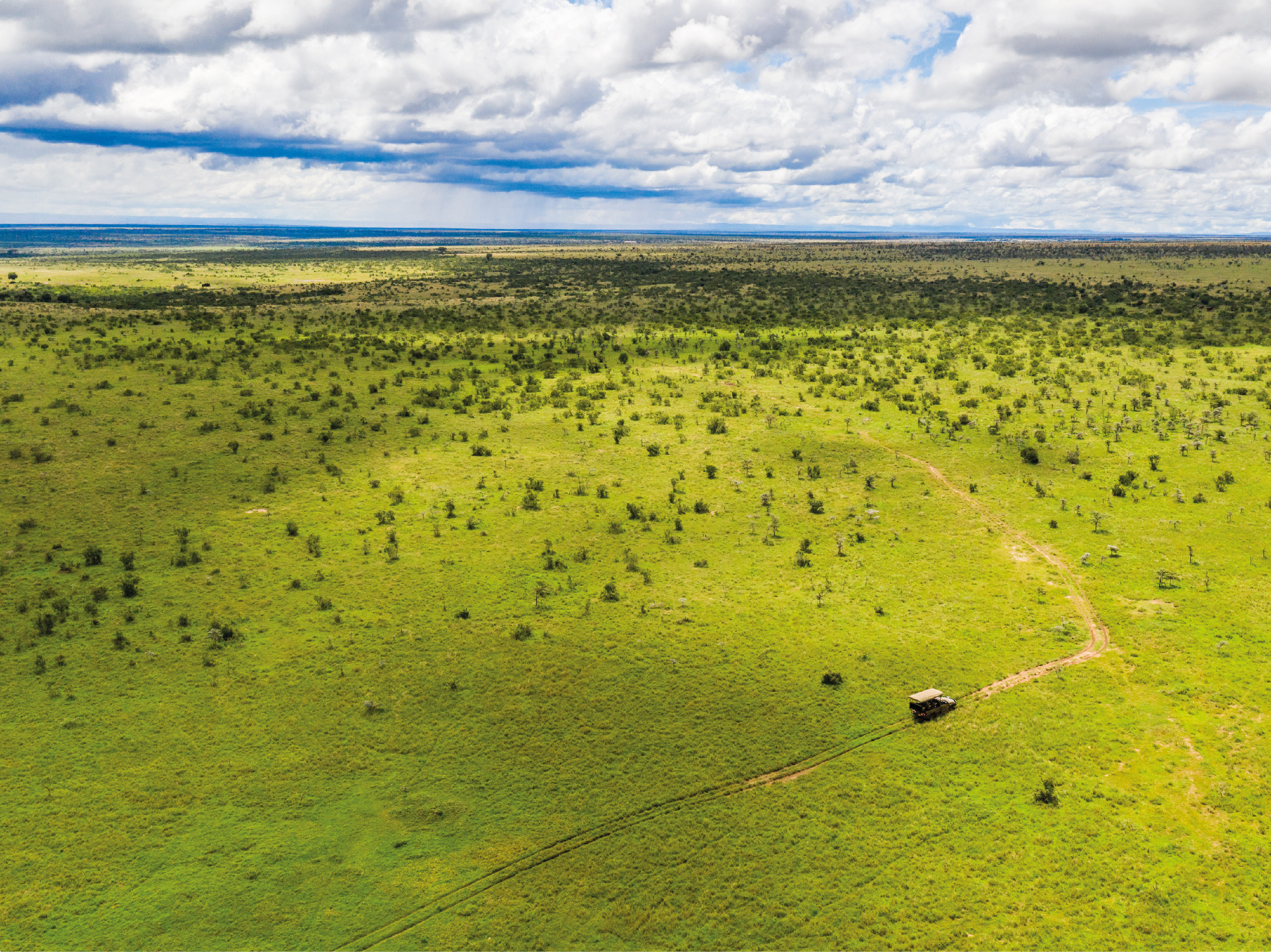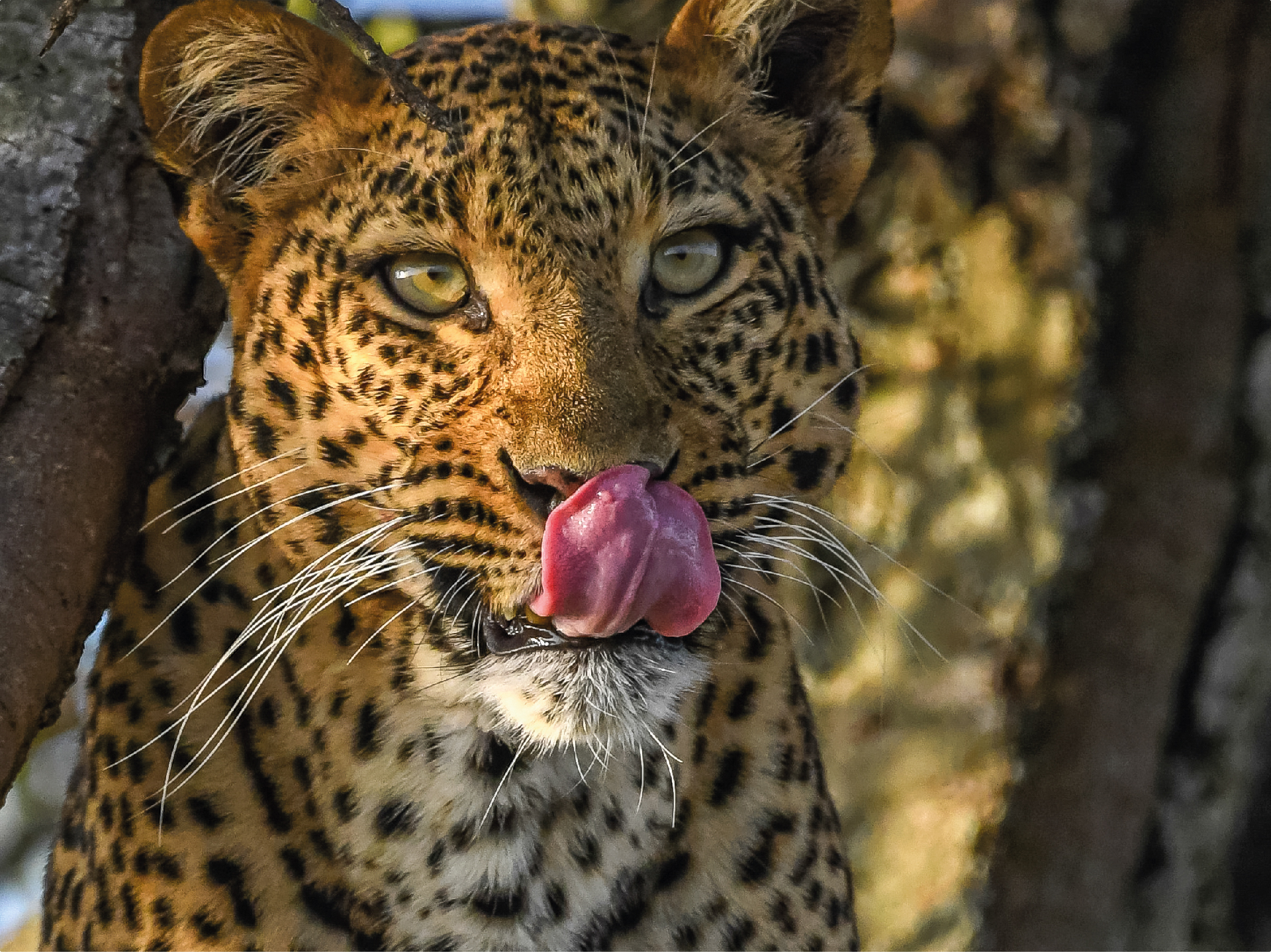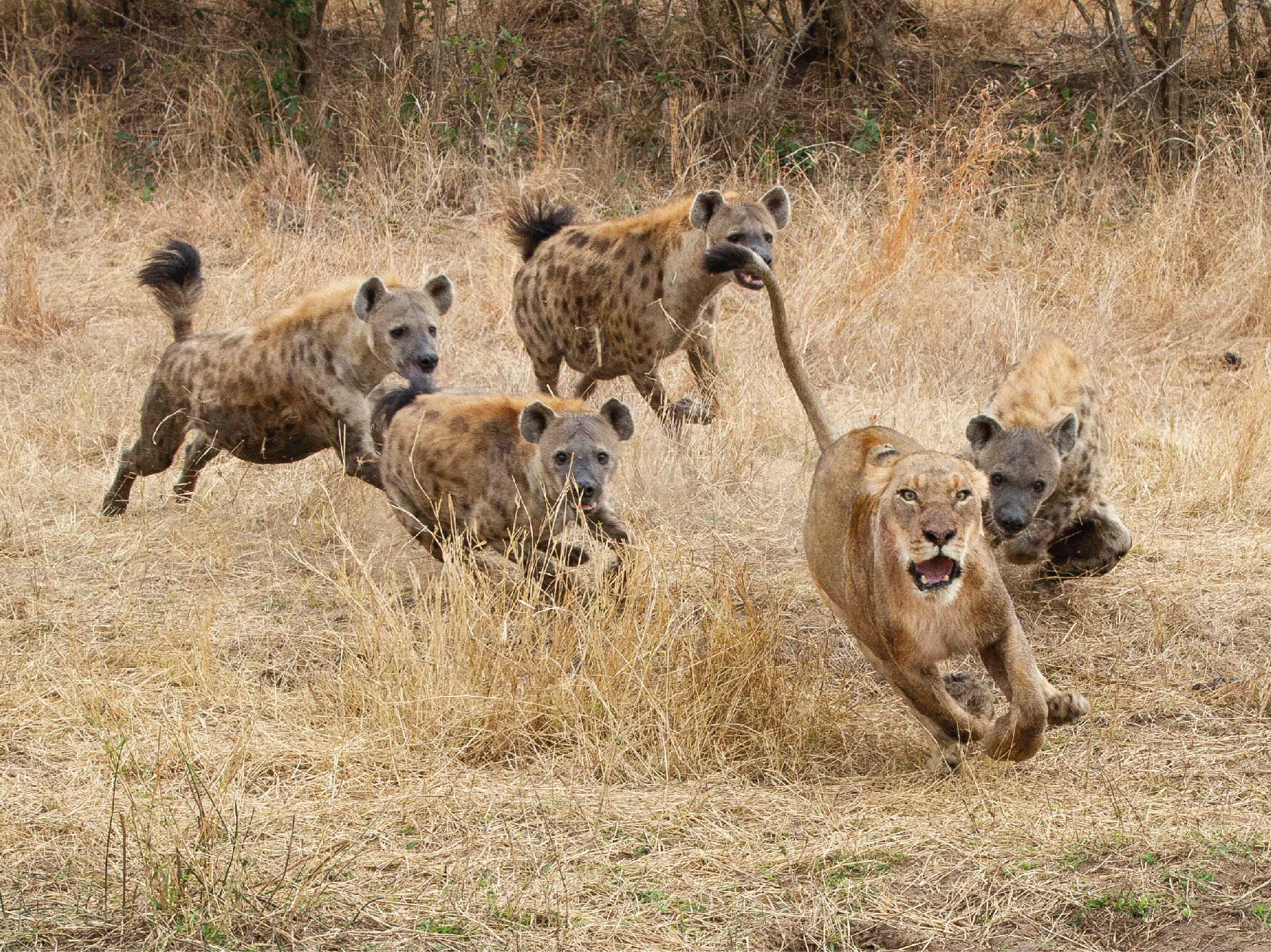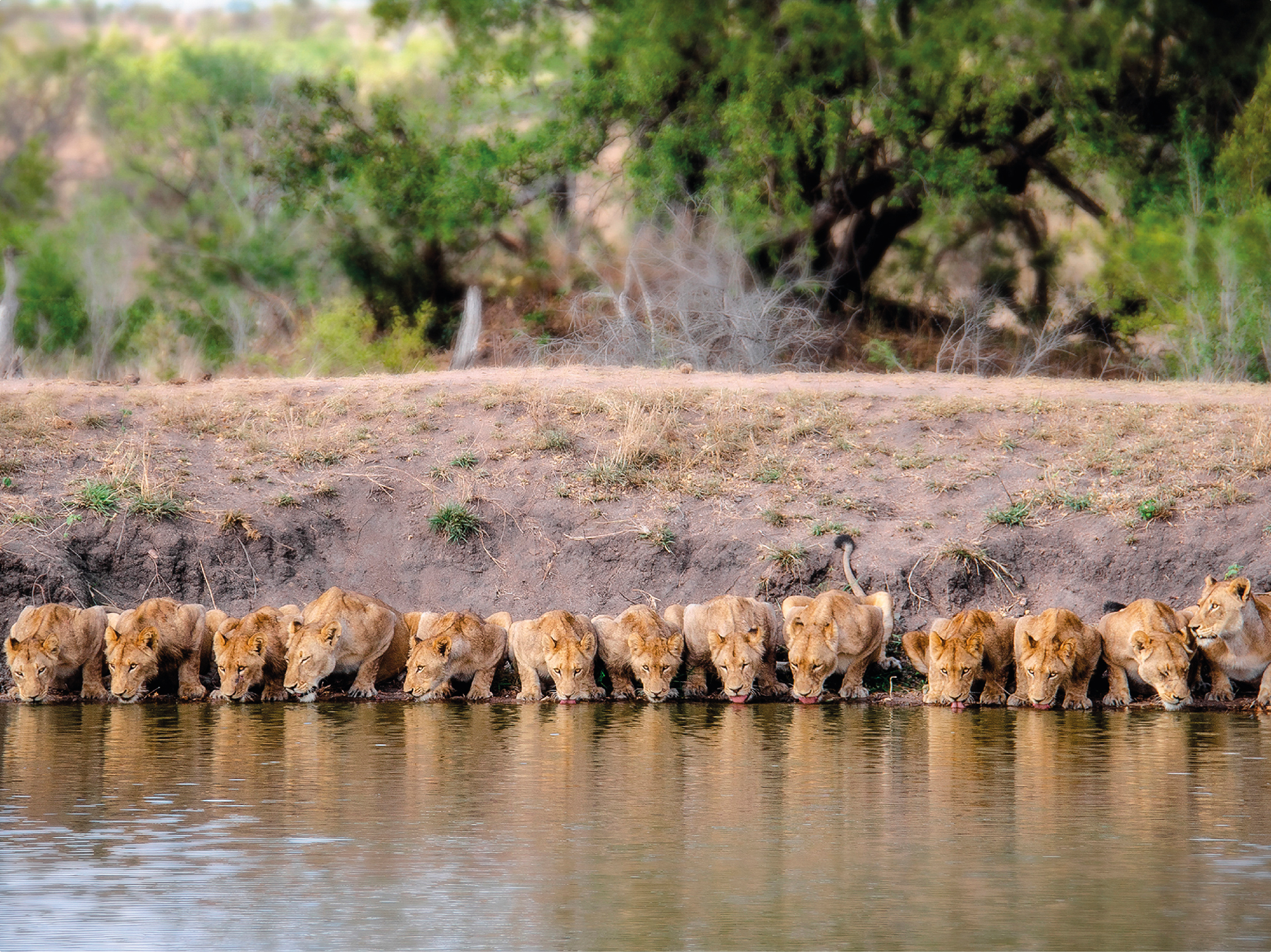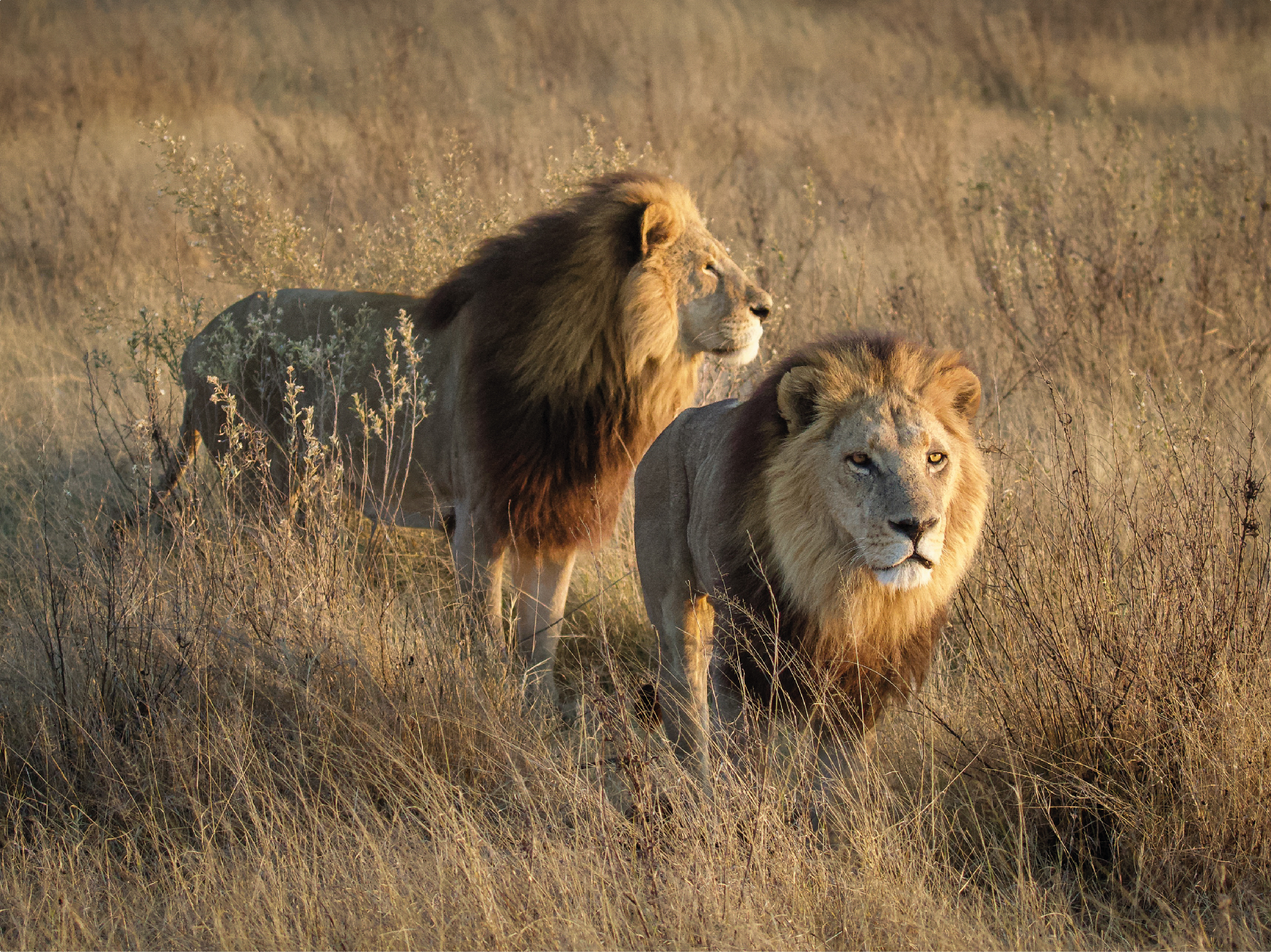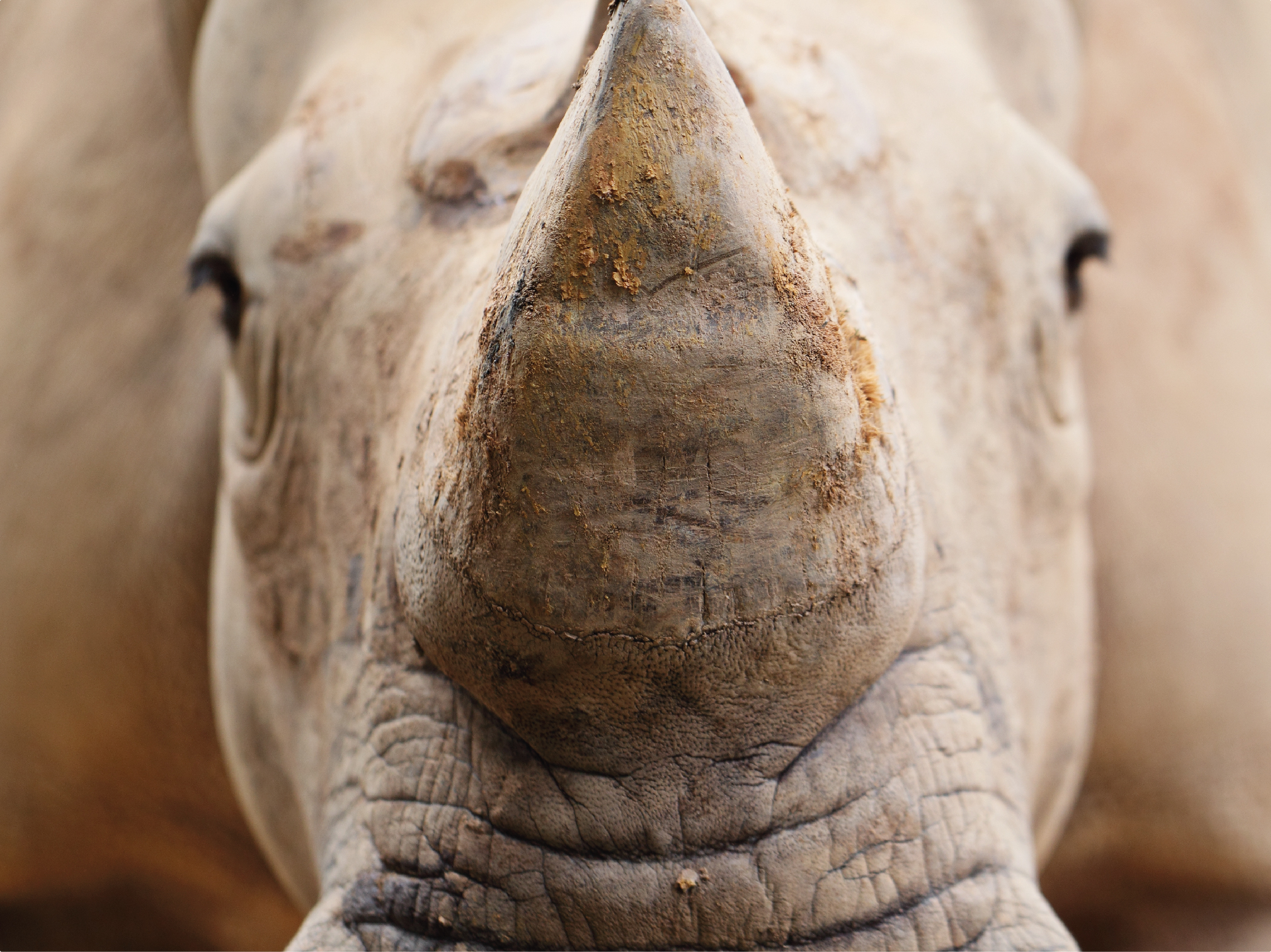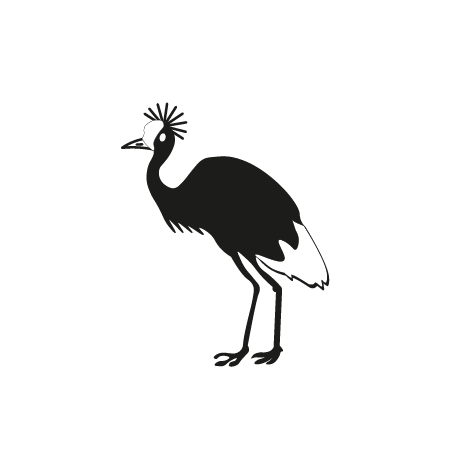The
Serengeti is the oldest and best known National Park in Tanzania. Declared a UNESCO World Heritage Site in 1981, it covers an area of about 15.000 square kilometres. Consisting of grasslands, savannahs and forests, it owes its fame to the largest migratory movement of wild animals. Gigantic herds of ungulates (more than one and a half million wildebeests, more than 200.000 zebras and 300.000 Thomson's gazelles), following the seasonality of the rains in search of new pastures, move relentlessly between the southern plains and the Masai Mara, covering a circular route of almost 800 km.
On this immense stage of life, 'prey' and 'predators' dominate the scene in Tanzania's largest park.
It is not difficult, in fact, to observe herds of lions feasting on the abundance of herbivores, while solitary leopards roam among the acacias along the Seronera River. Almost uniquely, the park is home to all three species of African jackal, the spotted hyena and smaller, more elusive predators such as the insectivorous aardwolf or the beautiful serval cat. A high density of cheetahs populates the south-eastern plains, while in the south-west, in the Moru Kopjes area, it is possible, with a bit of luck, to spot black rhinoceroses, now almost decimated by the savage poaching of past decades. And this, not surprisingly, is also the location of the Serengeti Rhino Project: a centre for the conservation of endangered species.
But, the Serengeti is not only the land of the Big Five 'the big five', i.e. the elephant, lion, leopard, rhinoceros and buffalo because the variety of its fauna is truly amazing and astonishing. Flamboyant agama lizards and rock hyraxes roam the surfaces of the isolated granite koppies that dot the endless plains. As many as 100 varieties of dung beetles and over 500 species of birds are recorded, from the ostrich to the bizarre secretary bird of the open prairies, to the black eagles soaring effortlessly above the Lobo Hills. Numerous hippos and the gory stillness of crocodiles can be observed along the waterways.
The emotions in the Serengeti are so overwhelming and numerous that there is not enough room in the heart to contain them all. It is impossible to describe the lingering feeling of freedom and spirituality created by the immense space of the plains stretching across the sun-scorched savannah, all the way to the shimmering golden horizon. The magic continues after the rains, when the golden expanses of grass turn into a boundless carpet of green, dotted with wild flowers. Finally, there are hills wooded with acacias and rivers lined with fig trees where the green foliage stands out, inexorably, against the characteristic dusty red earth: 'the spectacle within the spectacle’.
Discover our proposals for
safari in Tanzania to visit the Serengeti National Park.
